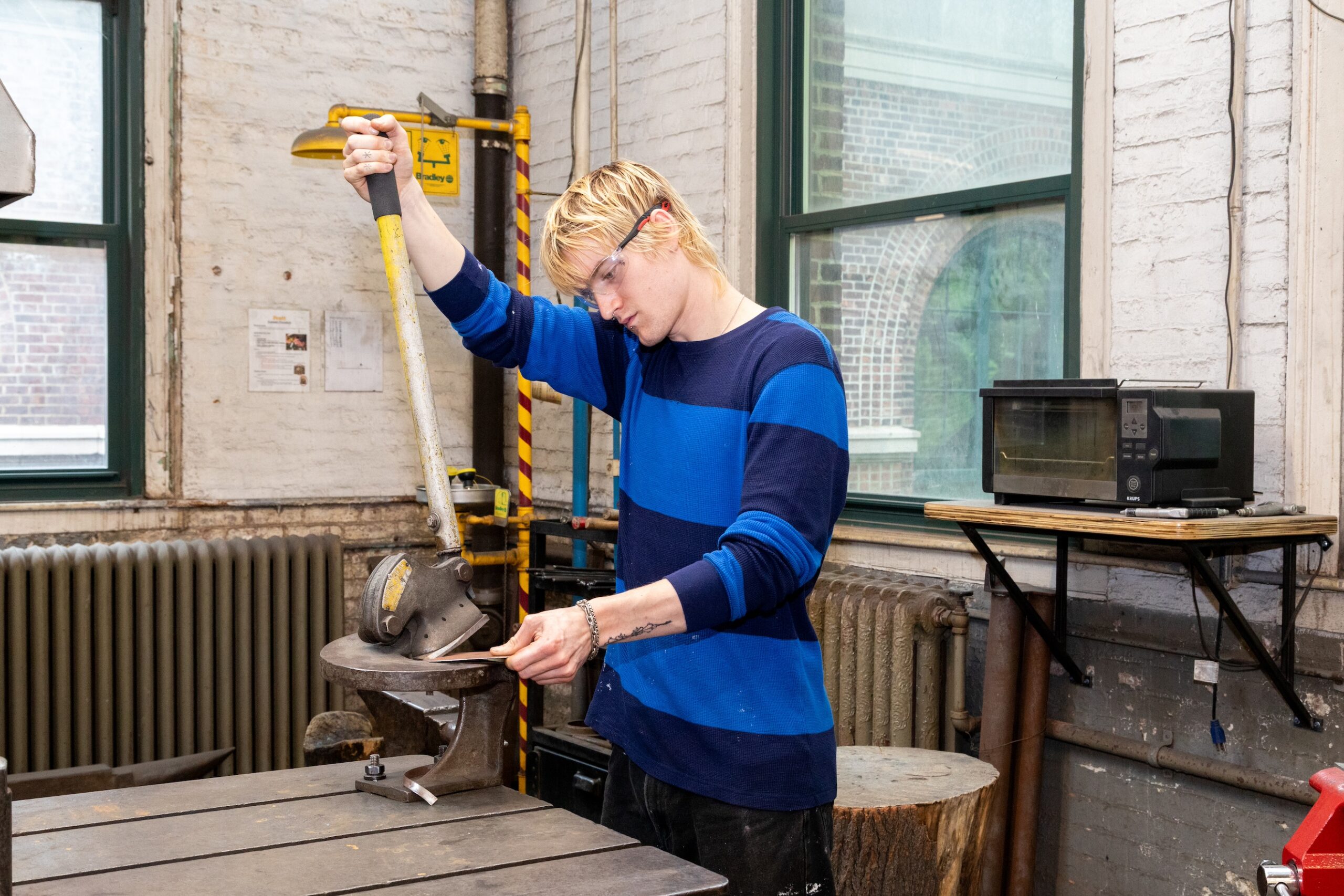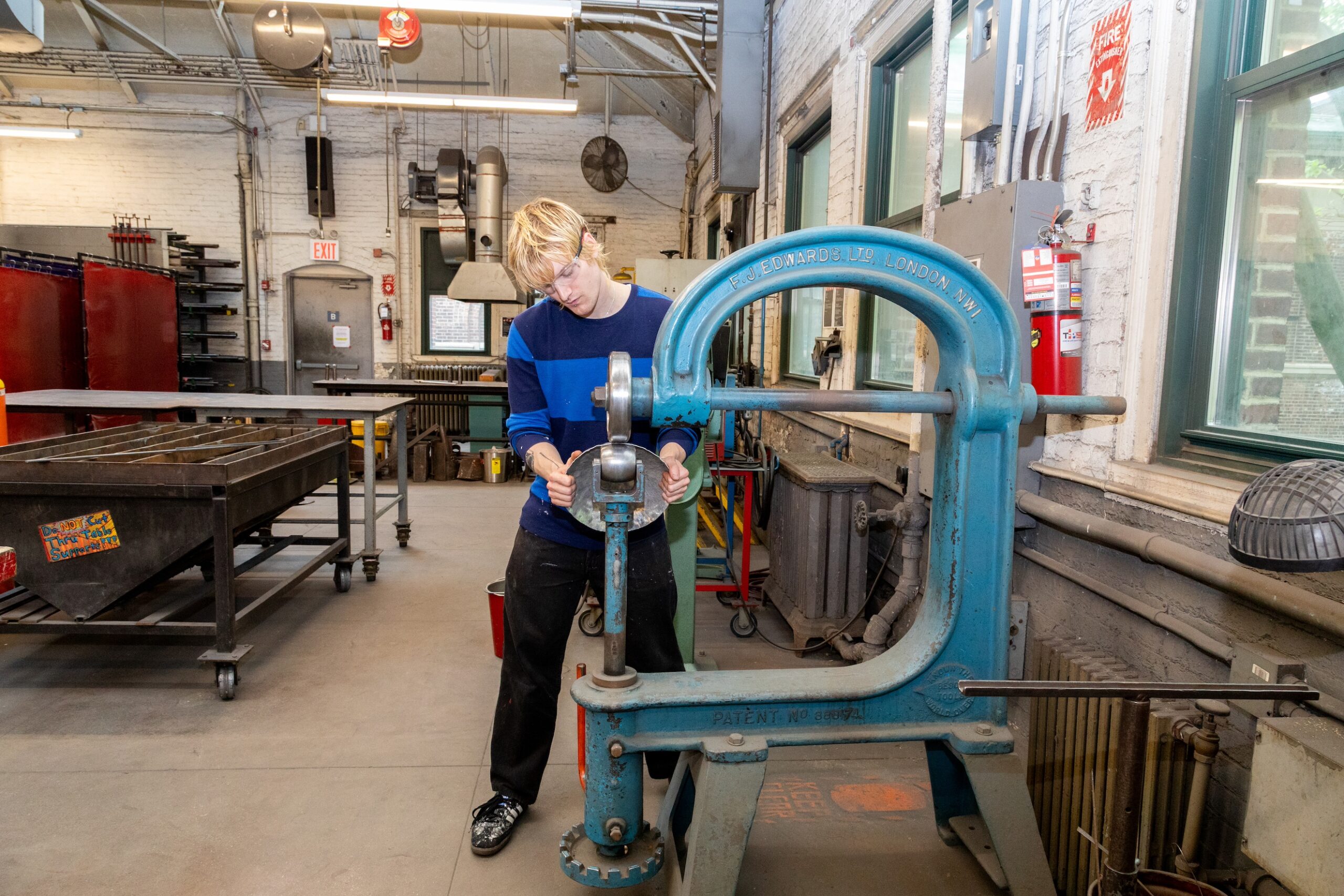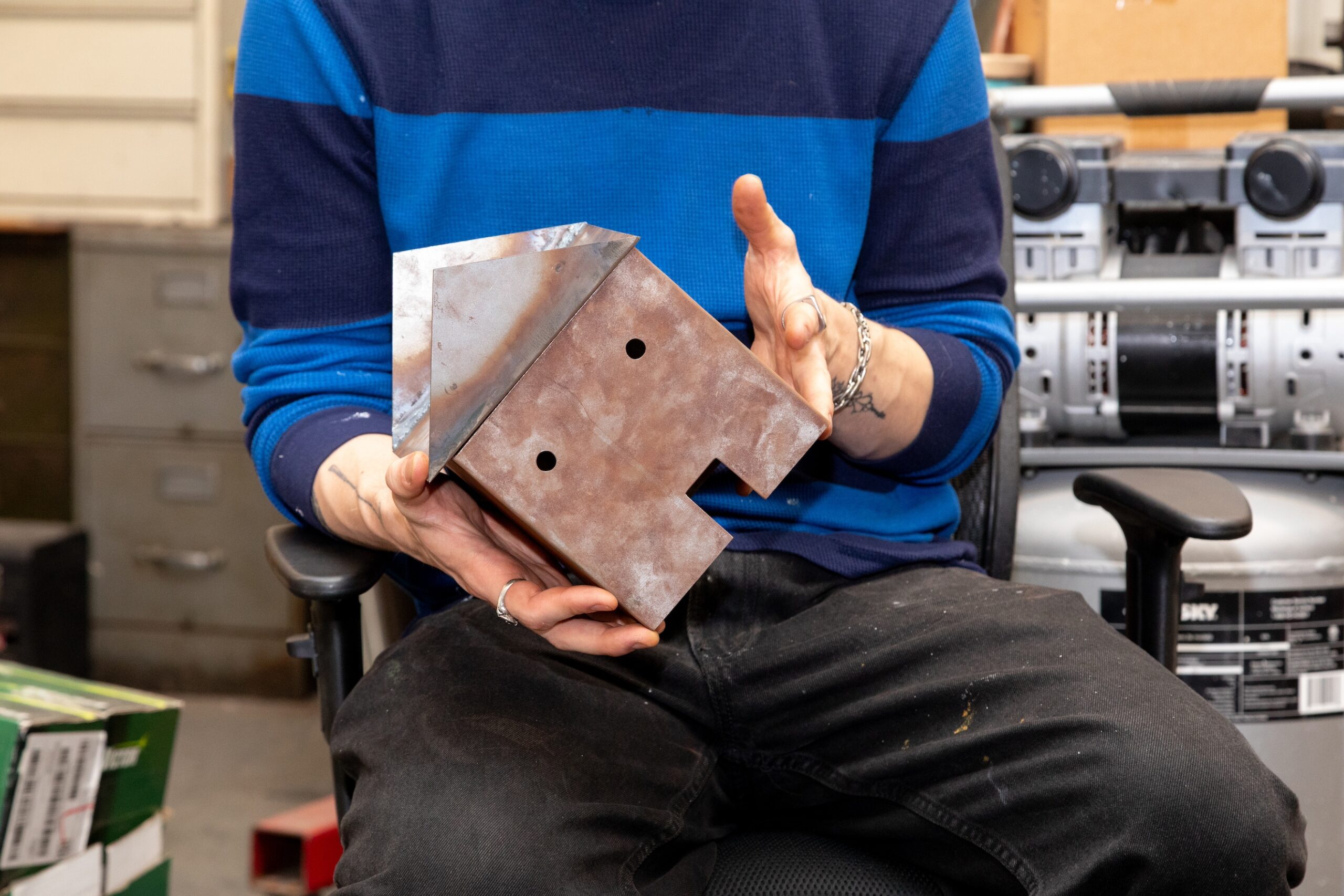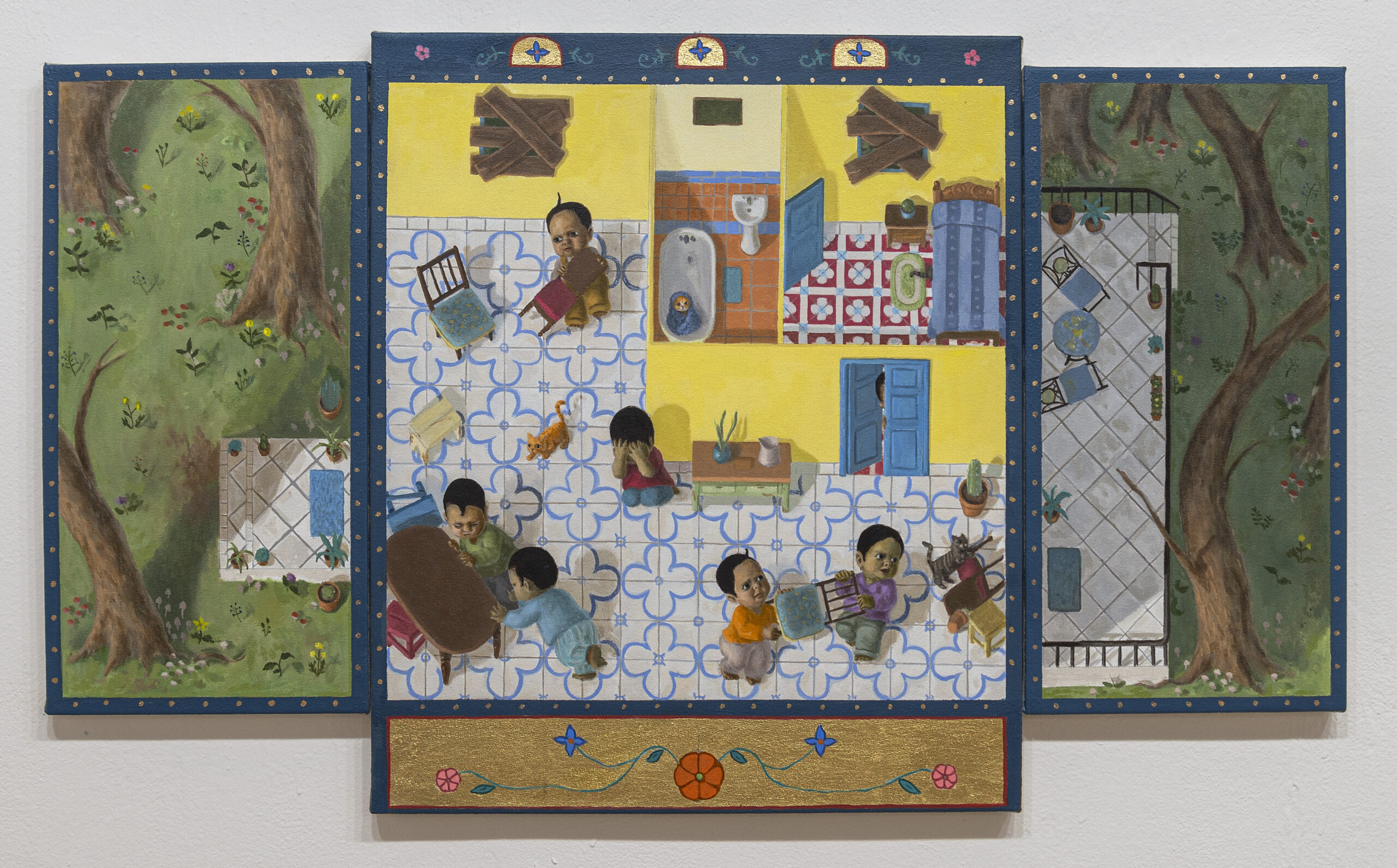This story is from Prattfolio’s feature “Mill, Melt, Press, Shape,” on students working across mediums in Pratt’s shops and labs.
Baker Townsend, BFA Fine Arts (Painting) ’26, studied computer science and graphic design before coming to Pratt, taking a new step into fine arts. Painting has since led to metalwork, and Townsend spoke with Prattfolio in the fine arts metal shop, amid the whirs, clangs, and snaps of work in progress, to talk about that journey.
What brought you to Pratt?
It was the campus, and access to a lot of resources to do things with my hands and physical mediums. I knew I wanted to do painting, because I was new to fine arts in general and started them kind of traditionally. Since I’ve been here, I’ve realized that I enjoy a lot more [practices]. I’ve always been fascinated with machine shops, the smell of them, the textures, the noises. My stepfather owned an upholstery shop, so I was in there a lot, and the mess of it all really fascinated me. I knew I wanted to work here [in the metal shop], so I took a class sophomore year, and then I got a job here this year.
What have you been working on this semester?
This semester, I took a class, sheet metal shaping, with Adam [Apostolos, visiting instructor and technician in the fine arts metal shop]. These are some projects we did, learning different techniques: We shaped a bowl, learning shining, beveling, curving, stretching, and shrinking, with aluminum. This box, we learned how to precisely measure, cut, and make something level, and hinges, being very precise—this one drove me nuts. It was fun.
I do like being very precise when I make things. I do enjoy something that works, that has a function.
Something else I’m working on is a house for a creature my partner is making. It’ll be this metal structure, epoxy molding, and these long legs, long arms coming out, like a hermit crab in its shell. They draw this thing a lot, and I told them they should make it a sculpture, so we’re working on that.
Is there anything you’ve discovered here that’s changed the way you think about your work?
Maybe not so much my work, but how I see objects. I understand how much goes into making a hole or making a box work; there are so many specificities that go into it. It’s allowed me to appreciate objects more, being in the metal shop, and I’ve gotten more interested in material.
I’ve worked with steel and aluminum, and I find it a lot of fun. The variation I deal with is how thick the metal gets, and that can cause different things to happen, which I think is very interesting. Same if I’m stretching a canvas, thinking about stretching cotton vs. canvas, a large scale vs. a small scale. The material reaction to the environment is interesting too. Like, this wasn’t rusted before it started getting humid a couple days ago, and canvas on a hot day will start sagging—which I kind of love. It feels like it’s alive.
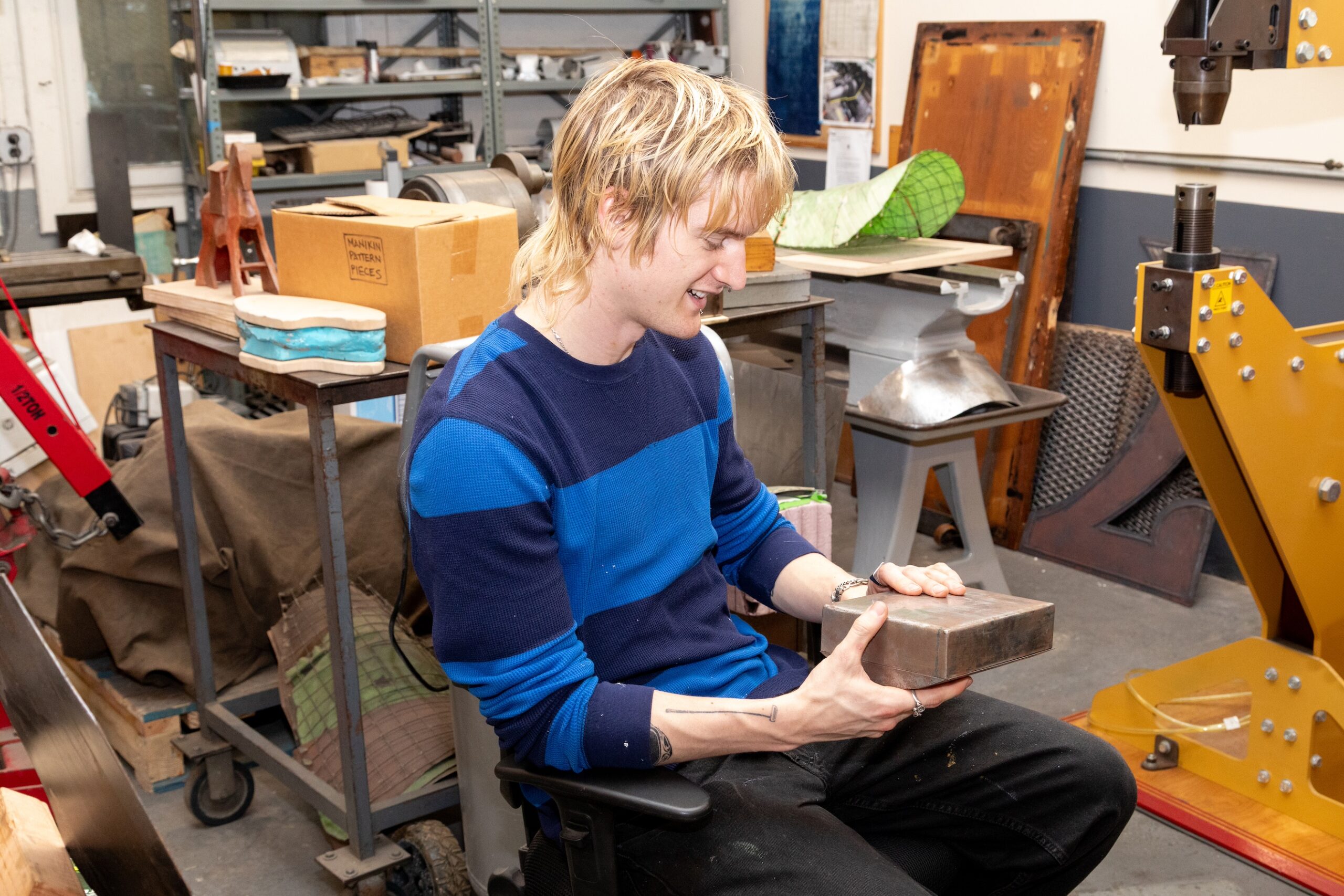
You’ve talked about how the metal shop is a collegial environment—how have you worked with other students, whether it’s collaboration or guiding?
In here, it’s not a competition; there’s no reason not to help anyone. Adam knows best at the end of the day, but it is great when the room is full of people who have taken classes or worked here and you can ask them for advice. If I know someone works with a certain tool a lot and I’m going to use that tool, I go to them. I work a lot with the drill press and know how it operates well, and people come to me to ask about that.
What are some of the fundamental things you’ve learned here in the metal shop?
Tool sensibility, machinery sensibility. You don’t need to push too hard to make something work—if you’re pushing hard, it’s not going to work. How important it is to understand what a tool is before you use it, and how to work with it and not against it, and once you understand, you can pick things up a lot faster. That’s helpful outside here too.
At Pratt, we’re encouraged to make whatever we can conceive of, and I love that. At the same time, we should be making within the limitations of what we know and learn those limitations first before moving on.
I get wanting to learn everything all at once—I felt that same way—but you’ll get farther being comfortable with a small amount of tools first, and everything is going to feel easier after that. Build slow. It’s a whole new space, a new environment. You shouldn’t come in here expecting to know anything.
And for someone who’s curious about the shop but maybe hesitant?
It’s not a bad thing to be scared when coming in here. Be OK with it; it’s how you should be feeling. It starts to become a fun fear in this intense environment that, once you get used to it, invigorates you.
Photos by Megan Proctor, BFA Photography ’25
Related Reading & More
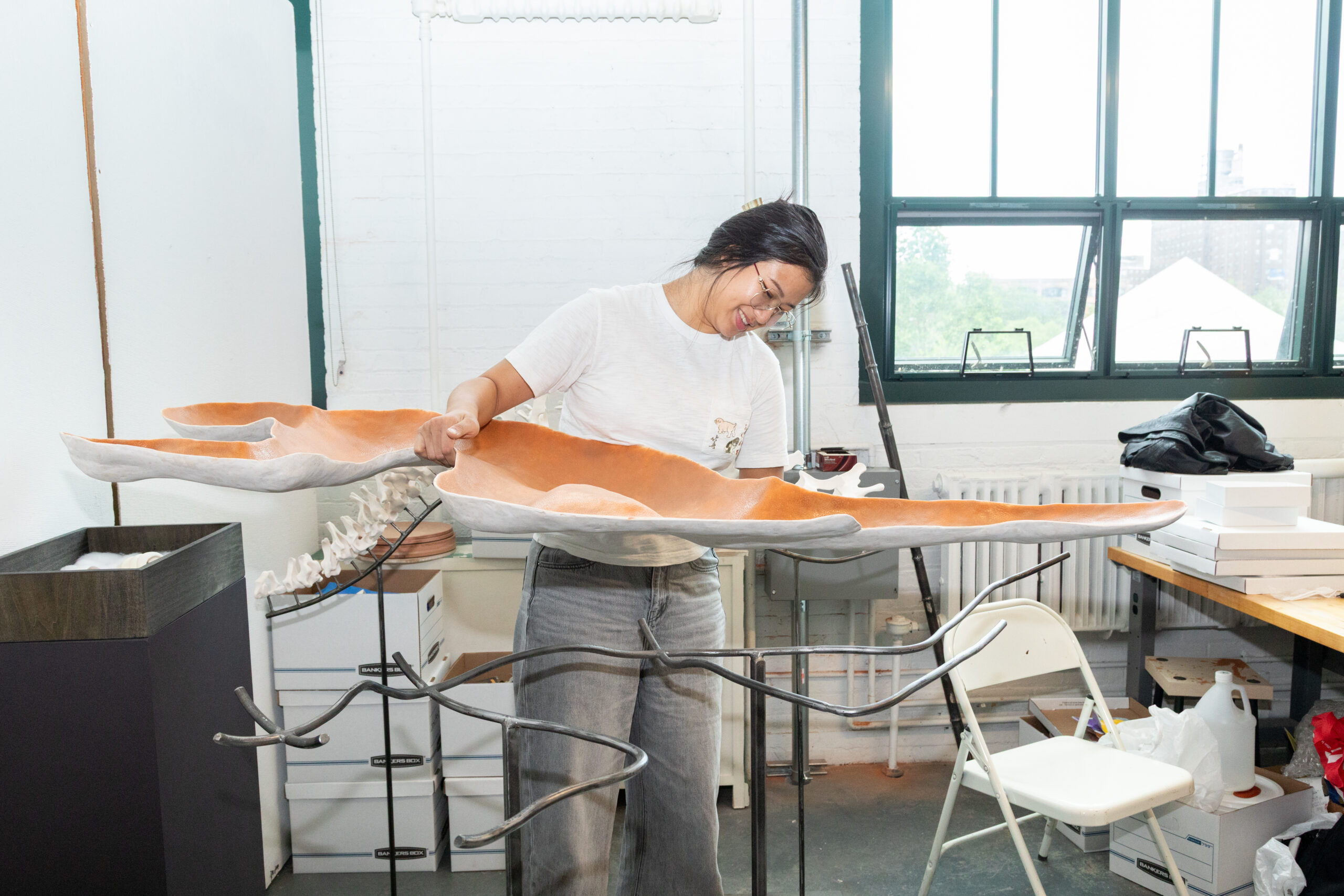
Bend, Sculpt, Plaster, Pop
Prattfolio Story
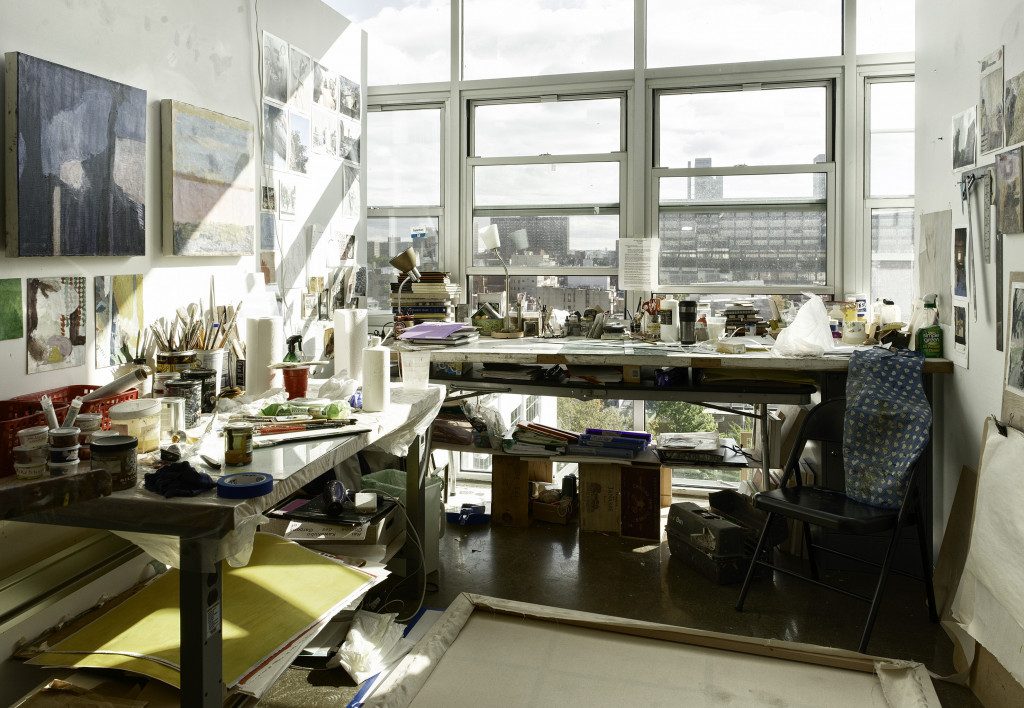
Fine Arts Facilities
Page
